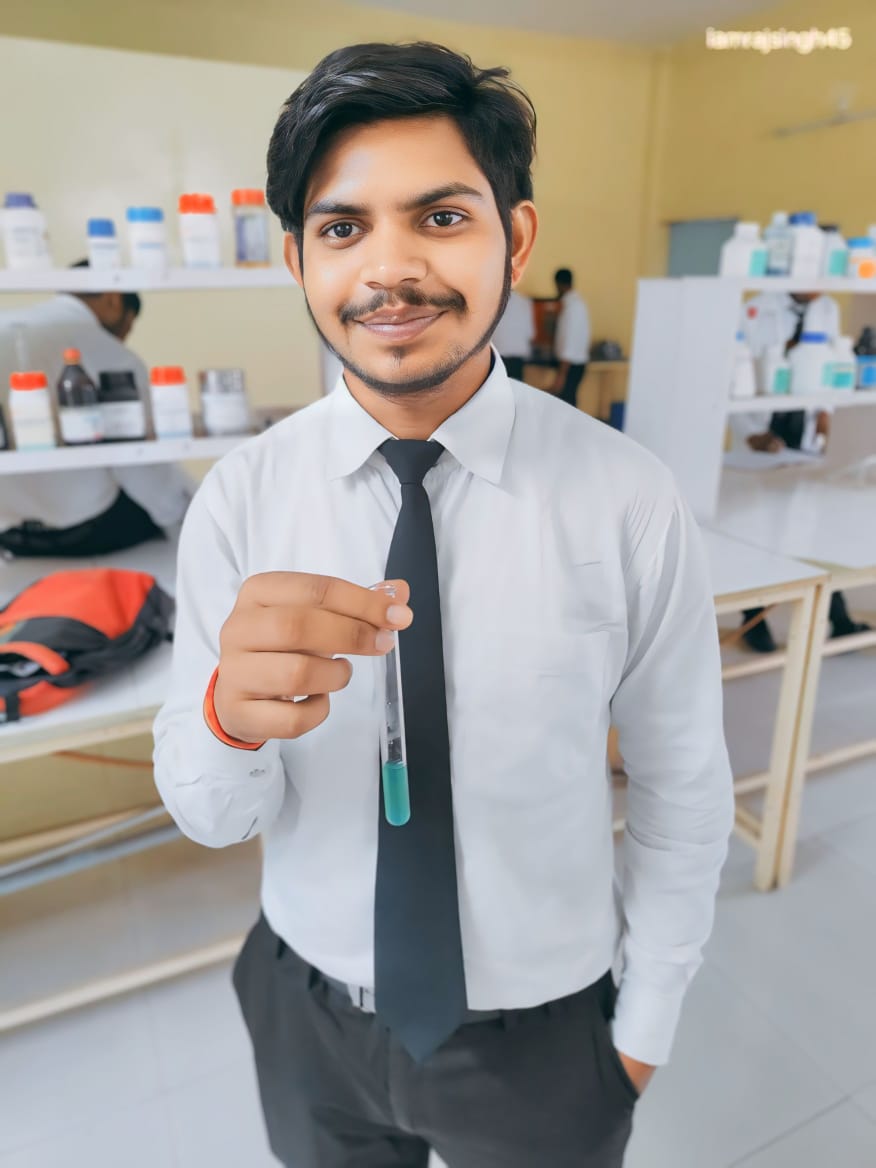Abstract
Ensuring access to essential medicines in an equitable manner continues to be an?important challenge in India’s diverse healthcare ecosystem. Even though it is a world leader in drug manufacture, there are still wide gaps in medicine supply between regions and types of?healthcare. This review?summarizes evidence on the availability of essential medicines in public and private health facilities from studies during 2003–2017. The findings show stark geographic differences, as to availability – Punjab, Tamil Nadu and Jharkhand had high availability, whereas?states, especially in rural and underdeveloped areas showed severe lack. In general, private sector facilities have a higher availability of essential medicines than public facilities, yet low-income?populations are restricted in accessing them as they are often unable to cover associated costs incurred to access the services. Supply chains that are not efficient, procurement policies that are not standardized, and?high out-of-pocket spending, are major issues for governments. The NHAM (National Health Assurance Mission) also has a government commitment, and is on the models of?the Essential Medicines List (EML), which is a good sign of greater promises, but it must go for better coverage and better implementation. Policy implications include strengthening public health?care infrastructure, supply chain in the management of the taxpayer, promotion of generics and improvement in budgetary allocations for basic medications. Addressing these systemic issues is the?key to achieve universal health coverage for all Indian citizens and ensuring that all citizens have equitable access to life-saving medicines and treatments.
Keywords
Essential medicines, Summarizes evidence, Geographic differences, NHAM, EML, Public health?care, Life-saving medicine
Introduction
Access to essential medicines is a critical component of healthcare systems, ensuring that individuals receive the necessary treatments to prevent, diagnose, and manage diseases. In India, a country with a vast and diverse population, access to essential medicines remains a significant challenge. Despite efforts to improve healthcare infrastructure and implement policies to promote access to medicines, disparities persist, affecting vulnerable populations and exacerbating health inequities. The availability and affordability of essential medicines are crucial determinants of access. In India, the pharmaceutical market is complex, with a mix of public and private providers, and varying levels of quality control. Out-of-pocket payments for medicines are a significant burden for many households, leading to financial hardship and treatment non-adherence. Policy challenges also play a role in limiting access to essential medicines. India's pharmaceutical policies have aimed to balance patent protection with public health needs, but implementation and enforcement remain inconsistent. Additionally, the country's healthcare system faces challenges in ensuring equitable access to medicines, particularly for rural and marginalized populations. This systematic review aims to synthesize existing evidence on the disparities in access to essential medicines in India, focusing on availability, affordability, and policy challenges. By examining the current state of access to essential medicines, this review will identify areas for improvement and inform strategies to promote equitable access to these life-saving interventions, ultimately contributing to better health outcomes for India's population.
- Ensuring Equitable Access to Essential Medicines in India's Diverse Healthcare System
The Alma-Ata Declaration of 1978 marked a pivotal moment in global health by enshrining health as an inalienable human right.[1] This landmark event galvanized international efforts towards achieving universal health coverage.[2] India's healthcare system, a complex federal structure comprising 33 states and union territories, mirrors this global aspiration.[3] Aligned with the World Health Organization's vision, the nation strives to deliver accessible, effective, and affordable healthcare services to its vast population.[4] Essential medicines, a cornerstone of primary healthcare, are indispensable for disease prevention, treatment, and management. However, the path to universal access is fraught with challenges.[5] Disparities in healthcare resource allocation, particularly in medicine budgets, exist across Indian states.[6] While some regions demonstrate substantial commitment to pharmaceutical expenditure, others grapple with significantly lower investments, potentially impacting the availability and affordability of essential drugs.[7] Furthermore, the irregular supply of medicines within public health facilities, particularly in resource-constrained settings, exacerbates these challenges.[8] India's "Health for All" policy, coupled with mandates for generic prescribing, represents significant strides towards improving medication access.[9] Nevertheless, substantial gaps persist. To bridge these divides and optimize resource utilization, a multi-faceted approach is imperative. This includes strengthening pharmaceutical supply chains, promoting rational drug use, and investing in robust health systems research to inform evidence-based policies. [10] Ultimately, realizing the vision of universal health coverage in India necessitates a concerted effort to ensure equitable access to essential medicines across the country. [11]
- Review of a Decade of Essential Medicines Availability in India (2003-2017)
A comprehensive literature search was undertaken to investigate the availability of essential medicines within India. PubMed and Google Scholar were utilized as primary databases, with search terms encompassing "essential medicines," "WHO essential medicines list," "India," and "availability."[12][13] The inclusion criteria for studies were publication in the English language within the timeframe of 2003 to 2017. A systematic approach was employed to identify relevant research, followed by a rigorous evaluation of their methodological quality and data extraction. [14] The accumulated findings from these studies were subsequently synthesized into a narrative review, providing a comprehensive overview of the current state of essential medicine availability in India. [15]
- Essential Medicines: A Global Perspective
The foundation for the concept of essential medicines was laid during the 1970s. Recognizing the disproportionate burden of ill-health borne by developing nations, the World Health Organization (WHO) initiated a comprehensive examination of prevailing drug-related challenges.[16] This culminated in a pivotal moment at the 28th World Health Assembly in 1975, where the WHO Director-General underscored the urgent need for a new drug policy centered around improving access to essential medications for the population.[17] A subsequent global consultation convened in Geneva during 1977 brought together experts to identify and compile a list of drugs deemed essential for primary healthcare in developing countries.[18] This collaborative effort resulted in the creation of the first WHO Model List of Essential Medicines in the same year.[19] The list, which has undergone multiple revisions (1979, 1983, 1985, and 1988), serves as a cornerstone for guiding medication selection and prioritization in healthcare systems worldwide.[20] The most recent iteration, the 21st edition published in 2019, reflects the evolving landscape of healthcare needs and therapeutic advancements.[21]Essential medicines form a cornerstone of the World Health Organization's (WHO) primary healthcare strategy, a comprehensive approach centered on addressing the most prevalent health issues within communities through promotion, prevention, and rehabilitation.[22] These medications are defined by their capacity to meet the primary healthcare needs of the majority of the population.[23] To be considered essential, a medicine must be consistently available in adequate quantities, formulated appropriately, and adhere to stringent quality standards.[24] Furthermore, accessibility is paramount, requiring clear and accurate information alongside pricing that is affordable for the general public. The profound impact of essential medicines on global health cannot be overstated.[25] As indispensable components of modern healthcare, they serve as catalysts for improved health outcomes.[26] By ensuring their regular availability, healthcare systems can enhance performance, bolster public confidence, and ultimately contribute to the realization of broader health goals.[27] The integration of essential medicines into both the Millennium Development Goals and the WHO's Universal Health Coverage agenda underscores their critical role in advancing global health equity.[28] A robust and resilient healthcare system is intrinsically linked to the consistent and equitable access to essential medicines, making their availability a fundamental determinant of population health.[29] Access to medicines is a fundamental human right inextricably linked to health outcomes.[30] The Millennium Development Goals underscored the global commitment to improving access to affordable essential medicines, especially in low-income countries.[31] However, a significant gap persists: nearly two billion people worldwide lack access to medications necessary for managing chronic diseases, preventing disabilities, and saving lives.[32] To achieve comprehensive access, five key dimensions must be addressed: availability, affordability, accessibility, acceptability, and quality.[33] The Access to Medicines Index offers a valuable tool for assessing pharmaceutical industry efforts in this domain.[34] Research consistently demonstrates that carefully curated essential medicines lists can optimize resource allocation within healthcare systems, reduce waste, and enhance the quality of care delivered.[35] These lists should be tailored to specific national health priorities, incorporating evidence on safety, efficacy, and cost-effectiveness.[36] Implementation requires a concerted effort involving both public and private sectors at all levels of care.[37] Defining access as the availability of affordable medicines within a one-hour walking distance highlights the geographic and financial barriers that many populations face.[38] Numerous studies have documented the persistent shortfall in essential medicine availability, particularly within public healthcare facilities.[39] Addressing these challenges necessitates robust health systems, equitable resource distribution, and effective supply chain management.[40] Ultimately, ensuring equitable access to medicines is essential for achieving universal health coverage and improving global health outcomes.[41] India has ascended to a prominent position in the global pharmaceutical landscape, ranking third in production volume and fourteenth in value. However, this achievement contrasts starkly with the nation's healthcare spending patterns.[42] A substantial portion of healthcare costs in India is borne out-of-pocket by patients, with medications constituting the most significant expenditure.[43] This financial burden disproportionately affects vulnerable populations.[44] Recognizing the imperative of improving access to essential medicines, the Indian government introduced the National Health Assurance Mission (NHAM) as a pivotal step towards Universal Health Coverage.[45] A core component of NHAM is the guaranteed availability of fifty priority essential medicines at all healthcare levels for individuals below the poverty line.[46] Historical data underscores the challenges associated with ensuring a consistent and equitable supply of medicines within government healthcare facilities.[47] To address this, the Essential Medicines List (EML) committee was established to develop standardized drug lists and corresponding treatment guidelines.[48] A pilot implementation in Delhi yielded promising results, demonstrating substantial reductions in drug procurement costs, increased medicine availability, and improved affordability.[49] These findings offer valuable insights for scaling up such initiatives nationwide.[50] By adopting a comprehensive approach that encompasses robust pharmaceutical supply chain management, equitable resource allocation, and effective policy implementation, India can significantly enhance access to essential medicines.[51] This, in turn, will contribute to improved health outcomes, reduced financial hardship, and a more equitable healthcare system.[52] While India's pharmaceutical industry has flourished, the country faces significant challenges in ensuring equitable access to essential medicines.[53] Out-of-pocket expenses for medications remain a substantial burden, particularly for the poor. The National Health Assurance Mission represents a crucial step towards addressing this issue by guaranteeing access to essential medicines for vulnerable populations. Lessons learned from the Essential Medicines List initiative in Delhi provide a roadmap for scaling up successful interventions nationwide. To achieve optimal results, a multifaceted strategy is required. This includes strengthening the pharmaceutical supply chain, promoting rational drug use, and investing in robust health systems research. By prioritizing access to essential medicines, India can make significant strides towards universal health coverage and improved population health. Comparative studies across developing and middle-income countries have consistently revealed stark disparities in generic medicine availability between public and private healthcare sectors. While private sector outlets exhibit higher rates of generic medicine stocking, public sector facilities frequently grapple with critical shortages. This discrepancy has profound implications for patient care. When public health facilities are unable to provide essential medications, patients are often compelled to seek alternatives in the private market. This shift places a substantial financial burden on individuals, particularly those living in poverty. Furthermore, the cost of generic medicines in the private sector is often exorbitant, with prices exceeding international reference prices by a factor of six or more. These systemic issues align with broader global trends highlighting the limited access to essential medicines for approximately one-third of the world's population. The situation is particularly dire in developing countries, where socioeconomic vulnerabilities intersect with weak healthcare infrastructure. The consequences of this crisis extend beyond individual hardship, impacting public health outcomes, economic productivity, and social equity. To address these challenges, a multi-faceted approach is imperative, encompassing robust pharmaceutical supply chain management, equitable resource allocation, and policy interventions that prioritize access and affordability [54]. A systematic review was conducted to assess drug availability and its determinants in low-, lower-middle-, and upper-middle-income countries. A comprehensive search of electronic databases yielded 33 articles published between 2007 and 2017, of which six met the inclusion criteria. Findings indicated a suboptimal availability of essential medicines in certain developing countries, with generic drugs demonstrating superior accessibility compared to brand-name counterparts, particularly within the public sector. The review identified government policies as key factors influencing drug availability. Strategies aimed at improving access and reducing drug prices were highlighted as essential components of national drug policies. The WHO Health Action International methodology was predominantly employed to measure drug availability across studies. Despite progress, the availability of essential medicines remains a significant challenge in low- and middle-income countries. To enhance drug access and affordability, robust government policies and effective implementation strategies are imperative. These policies should encompass a range of interventions, including strengthening pharmaceutical supply chains, promoting rational drug use, and investing in healthcare infrastructure. Additionally, addressing factors such as corruption, counterfeit drugs, and inadequate healthcare financing is crucial. By adopting a comprehensive approach that considers the complex interplay of these factors, policymakers can significantly improve drug availability and ultimately enhance population health outcomes. Furthermore, future research should focus on identifying and evaluating innovative strategies to address drug availability challenges in specific contexts. Comparative studies examining the effectiveness of different policy interventions are needed to inform evidence-based decision-making. By building upon the findings of this review and conducting further research, policymakers can develop and implement targeted interventions to improve drug access and availability in low- and middle-income countries [55].
- Challenges in Indian Medicine Access
India's healthcare landscape is characterized by significant disparities in access to essential medicines, with an estimated 50-80% of the population experiencing limitations. To better understand this complex issue, researchers have undertaken numerous studies over the past two decades, examining the availability and affordability of these critical medications across various healthcare settings. While research has predominantly focused on the central, western, and southern regions of India, data from the northern states remains relatively scarce. Most studies have centered on commonly prescribed essential medicines, with a smaller subset exploring specific therapeutic classes [56, 57]. A notable trend is the increasing emphasis on generic medications, which often offer more affordable alternatives to branded drugs. A comprehensive assessment of the factors influencing medicine availability in India requires a nuanced understanding of the healthcare system's complexities. These factors include, but are not limited to, government policies, drug pricing regulations, supply chain management, infrastructure, and the distribution network. Additionally, socio-economic determinants such as income, education, and geographic location play a crucial role in shaping access to essential medicines. To illustrate the heterogeneity of medicine availability within India, a study examining six essential drugs across 124 private retail outlets in Maharashtra serves as a case in point. The findings underscore the variable accessibility of these medications, with metformin exhibiting the highest availability and other drugs demonstrating significantly lower rates. This disparity highlights the need for region-specific studies to identify local factors influencing medicine access and to inform targeted interventions. While progress has been made in understanding the challenges associated with essential medicine availability in India, further research is imperative to develop effective strategies to improve access for all. By comprehensively examining the factors influencing drug availability and implementing evidence-based interventions, India can work towards bridging the gap in access to essential medicines and enhancing the overall health and well-being of its population [58].
Table 1: Key Determinants and Trends in Essential Medicine Access in India (2003–2017)
|
Determinant
|
Observation/Trend
|
Implications
|
|
Healthcare Spending
|
Out-of-pocket expenditure remains high; medicines are the largest component of costs
|
Financial burden on poor households; limits access to essential medicines
|
|
Geographic Disparities
|
Northern states underrepresented in availability studies; rural areas face critical supply shortages
|
Need for region-specific policies and supply chain reinforcement
|
|
Generic Medicine Availability
|
Higher in private sector than public; cost in private sector often 6× global reference prices
|
Promotes inequity; patients often forced to purchase expensive alternatives
|
|
Public Sector Stockouts
|
Irregular availability of essential medicines in government facilities
|
Undermines trust in public healthcare; forces reliance on private market
|
|
Policy Measures (NHAM & EML)
|
NHAM introduced to guarantee 50 essential medicines; Delhi pilot showed success in cost and availability
|
Shows potential for scale-up; requires effective governance and implementation
|
|
Supply Chain & Infrastructure
|
Inadequate cold chains, logistical barriers, and fragmented procurement systems identified
|
Weakens medicine distribution, especially in remote or underserved areas
|
|
Socio-economic Determinants
|
Income, education, and geography strongly affect access
|
Equity-focused interventions needed to address these social determinants
|
|
Global Comparisons
|
India lags behind in public sector availability compared to other LMICs
|
Reflects systemic inefficiencies; comparative data can guide reform
|
|
Rational Drug Use
|
Emphasis on generic prescribing and EML updates; challenges remain in implementation
|
Requires ongoing training of prescribers and standardized treatment protocols
|
|
Research Gaps & Data Deficiency
|
Limited comprehensive data on Northern India and private-public sector disparities
|
More nationwide studies needed to support evidence-based health policy decisions
|
- Availability of Essential Medicines in India: Regional and Facility-Level Disparities
The Indian landscape of essential medicine availability is characterized by significant heterogeneity, with pronounced variations evident across different regions and healthcare settings. Studies conducted in metropolitan areas such as Delhi have underscored the stark disparities between public, private, and tertiary care facilities. While the latter often exhibit relatively higher drug availability, public and municipal health facilities frequently grapple with severe shortages. These discrepancies underscore the critical role of governance, resource allocation, and infrastructure in determining access to essential medications. In contrast, rural and less developed regions, such as Odisha, present a more challenging scenario. Research consistently demonstrates alarmingly low availability rates for essential medicines in both public and private sectors within these areas. This highlights the urgent need for substantial investments in healthcare infrastructure, supply chain optimization, and human resource development to address the critical shortage of essential drugs. Furthermore, intra-state variations in drug availability are evident. While some studies have reported instances of relatively high availability at specific healthcare facilities, these cases often represent isolated outliers. A more representative picture emerges from research conducted across multiple districts, which typically reveals moderate to low availability rates. This emphasizes the importance of conducting comprehensive assessments at the district or state level to accurately gauge the extent of drug shortages and to inform targeted interventions. The complex interplay between factors such as government policies, drug pricing, supply chain management, and healthcare infrastructure significantly influences the availability of essential medicines. Additionally, socio-economic determinants, including income, education, and geographic location, play a crucial role in shaping access to these vital medications. To address the multifaceted challenges associated with essential medicine availability, a multi-pronged approach is imperative. Strengthening public health infrastructure, improving drug procurement and distribution systems, and promoting rational drug use are essential components of any comprehensive strategy. Moreover, targeted interventions tailored to specific regional contexts are necessary to optimize the impact of healthcare policies. By investing in robust data collection and analysis, policymakers can develop evidence-based strategies to address the specific needs of different populations and healthcare settings. Ultimately, ensuring equitable access to essential medicines is a fundamental prerequisite for achieving universal health coverage and improving population health outcomes. By prioritizing this critical issue and implementing effective interventions, India can make significant strides towards reducing health disparities and enhancing the well-being of its citizens [59, 60].
- Impact of NRHM on Paediatric Drug Access in India
A comprehensive assessment of essential paediatric medication availability was conducted across 129 healthcare facilities distributed across 17 states, two union territories, and the National Capital Region of Delhi within the framework of the National Rural Health Mission (NRHM). The study revealed an overall availability rate of 80% (range: 0-100%) for these crucial medications. Notably, three states—Punjab, Tamil Nadu, and Jharkhand—demonstrated exemplary performance with a perfect 100% availability across all surveyed facilities. These findings highlight the heterogeneous nature of essential medicine access within India's diverse healthcare landscape. While the overall availability rate is encouraging, it is essential to acknowledge the significant disparities between states and regions. Further investigation into the factors contributing to these variations is warranted to inform targeted interventions aimed at enhancing access to essential pediatric medications nationwide.This study provides valuable insights into the distribution of essential pediatric medicines within the Indian healthcare system. The identification of states with consistently high availability levels offers a benchmark for other regions to emulate. However, the persistent challenges faced by numerous states underscore the need for sustained efforts to strengthen pharmaceutical supply chains, improve healthcare infrastructure, and optimize resource allocation. By addressing these critical areas, India can move closer to ensuring equitable access to essential medications for all children, thereby promoting improved health outcomes and reducing preventable childhood morbidity and mortality [61, 62].
- Challenges in Essential Medicine Access in India
Antimicrobial resistance, a burgeoning global health crisis, necessitates a comprehensive approach, including judicious antibiotic utilization. A foundational step in this endeavor is assessing antibiotic accessibility. A study examining antibiotic availability within Delhi's public and private healthcare sectors revealed stark disparities. While private facilities demonstrated adequate access, public sector counterparts exhibited suboptimal availability, with no facility stocking the entire survey list. These findings underscore the critical role of the healthcare delivery system in influencing medication access. Asthma, a chronic respiratory condition affecting millions, requires readily available essential inhalers. Despite their inclusion in India's National List of Essential Medicines, a study evaluating five states revealed limited accessibility, particularly within public healthcare settings. This disparity is compounded by the inconsistent availability of generic inhalers, essential for affordability. These findings highlight the challenges associated with ensuring equitable access to essential asthma medications, particularly among vulnerable populations. Magnesium sulfate, a cornerstone treatment for eclampsia, is prioritized in both the WHO Essential Medicines List and India's National List of Essential Medicines. A study conducted in North Karnataka demonstrated reasonable availability in public healthcare facilities, although variability existed. This finding offers a glimmer of hope, suggesting that with appropriate policy interventions, essential medications for maternal health can be made accessible. India's substantial tobacco burden necessitates effective cessation pharmacotherapy. Unfortunately, a study evaluating the availability of nicotine replacement therapy, bupropion, and varenicline across Kerala revealed a dearth of these medications in public healthcare settings. This gap in essential tobacco cessation treatments underscores the need for concerted efforts to promote tobacco cessation and improve access to evidence-based interventions. Collectively, these studies illuminate the complex interplay of factors influencing essential medicine access in India. While private sector availability often surpasses that of the public sector, significant disparities persist. Addressing these challenges necessitates a multi-faceted approach encompassing robust pharmaceutical supply chain management, equitable resource allocation, and effective policy implementation. Strengthening public healthcare infrastructure, promoting rational drug use, and investing in healthcare human resources are crucial components of this endeavor. Furthermore, targeted interventions tailored to specific regional contexts are essential to optimize the impact of healthcare policies. By prioritizing access to essential medicines and implementing evidence-based strategies, India can make substantial progress towards improving population health and achieving universal health coverage. A complex interplay of factors underlies the availability of essential medicines in India. Healthcare infrastructure, encompassing the quality, distribution, and accessibility of healthcare facilities, significantly influences medicine availability. A robust infrastructure, including primary, secondary, and tertiary care centers, is essential for ensuring that medicines reach the population effectively. Government policies and regulations play a pivotal role in shaping the pharmaceutical landscape. Drug pricing policies, procurement procedures, and reimbursement mechanisms directly impact the affordability and accessibility of medicines. Moreover, the regulatory framework governing the pharmaceutical industry influences the availability of essential drugs. Efficient supply chain management is crucial for ensuring uninterrupted supply and equitable distribution of medicines. This involves optimizing storage, transportation, and logistics, while minimizing wastage and losses. A skilled healthcare workforce is indispensable for appropriate prescribing, dispensing, and patient counseling, thereby contributing to the effective utilization of medicines. Socioeconomic factors, including income disparities, poverty, and geographical location, significantly influence access to medicines. Vulnerable populations, such as those residing in rural areas or urban slums, often face greater challenges in obtaining essential drugs. Additionally, patient education and awareness regarding the importance of medication adherence and rational drug use play a crucial role in optimizing the impact of available medicines. To comprehensively address the challenge of medicine availability, a multi-faceted approach is required. Strategic investments in healthcare infrastructure, coupled with evidence-based policy reforms, are essential. Strengthening supply chain management and building a competent healthcare workforce are equally important. Addressing socioeconomic disparities through targeted interventions and social safety nets can enhance access to medicines for vulnerable populations. By adopting a holistic perspective and collaborating across sectors, India can make significant strides towards ensuring the availability and accessibility of essential medicines for all its citizens [63, 64].
- A Complex Landscape: Unveiling Disparities in Essential Medicine Availability across India
Ensuring access to essential medicines is a cornerstone of any robust healthcare system. However, in India, the availability of these life-saving medications presents a complex and multifaceted challenge. Numerous studies conducted across diverse regions have illuminated the stark disparities that exist, highlighting the urgent need for comprehensive remedial measures.
- Geographic Disparity: A striking feature of the Indian landscape is the significant variation in medicine availability across different states. While some states, like Punjab, Tamil Nadu, and Jharkhand, exhibit relatively high availability rates, others grapple with persistent shortages. This geographic disparity underscores the need for a nuanced understanding of regional factors and targeted interventions to bridge these gaps. Strengthening healthcare infrastructure, particularly in underserved areas, and implementing region-specific policies that take into account local needs and challenges are crucial first steps [65, 66].
- Public vs. Private Divide: Studies consistently reveal a stark contrast in the availability of essential medicines between the public and private healthcare sectors. Private facilities generally demonstrate better access, often attributed to more flexible procurement processes and potentially higher profit margins. This disparity raises concerns about equitable access, particularly for vulnerable populations who rely heavily on public healthcare systems. Addressing this issue necessitates a multi-pronged approach, including strengthening public procurement mechanisms, optimizing resource allocation to public facilities, and exploring innovative financing models to enhance affordability of essential medicines within the public sector [67].
- Focus on Specific Medication Categories: Researchers have delved into the availability of various essential medicine categories, including antibiotics, asthma inhalers, maternal health drugs, and chronic disease treatments. This targeted approach provides valuable insights into specific challenges faced by different patient groups. For instance, studies have highlighted limitations in the availability of essential asthma inhalers in public facilities, impacting the management of this chronic respiratory condition. Similarly, research on antibiotics has revealed potential issues with over-prescription and the emergence of antibiotic resistance, prompting the need for stricter regulations and increased emphasis on rational drug use practices [68].
- Beyond Infrastructure – The Ripple Effect of Policy and Supply Chain Management: While the quality and distribution of healthcare facilities undeniably play a significant role in medicine availability, the influence extends beyond infrastructure. Government policies, including drug pricing regulations, procurement processes, and reimbursement mechanisms, significantly impact the availability and affordability of essential medicines. Inappropriate pricing policies can create disincentives for pharmaceutical companies to stock certain medications, leading to shortages. Additionally, inefficient procurement processes and cumbersome reimbursement mechanisms can further hinder access. Addressing these issues necessitates evidence-based policy reforms aimed at optimizing drug pricing, streamlining procurement processes, and ensuring efficient reimbursement mechanisms [69].
- The Crucial Role of Supply Chains: Even with robust infrastructure and well-defined policies, a robust and efficient supply chain is essential for ensuring consistent availability of essential medicines. Studies have highlighted the challenges posed by inefficient drug distribution and storage systems. Strengthening supply chains through effective logistics management, improved storage facilities with proper temperature control, and robust inventory control measures are crucial for minimizing wastage and ensuring timely availability of medications across all healthcare settings [70].
- A Look at the Evidence: Numerous studies have shed light on the complexities surrounding essential medicine availability in India. Kotwani and colleagues explored factors related to asthma medications, availability of essential medicines in five states, and antibiotic availability in Delhi. Gitanjali B et al. assessed essential children's medicines across 17 states. Additional studies explored medicine availability in public and private sectors of Odisha, Delhi, Andhra Pradesh, and other states. Investigations in Maharashtra, North Karnataka, Haryana, Punjab, and Chhattisgarh further highlighted regional variations and the influence of healthcare infrastructure and government policies. Finally, Sarma et al. evaluated the availability of smoking cessation medications in Kerala [71].
- Moving Forward: A Multifaceted Approach: The challenge of ensuring equitable access to essential medicines in India requires a multi-pronged approach. This includes targeted government interventions to address regional disparities and policy gaps. Investments in strengthening healthcare infrastructure, particularly in underserved areas, are essential. Additionally, implementing robust supply chain management practices and promoting rational drug use are crucial components. By prioritizing universal access to essential medicines and adopting a holistic approach, India can make significant strides towards improving population health and achieving universal health coverage [72].
- Beyond Access: Considerations for Sustainability: While ensuring access is a critical first step, long-term sustainability requires addressing issues beyond availability. Promoting rational drug use practices through public awareness campaigns and capacity building for healthcare professionals is essential for optimizing the impact of available medications. Additionally, exploring innovative financing models to enhance affordability for vulnerable populations, particularly in the context of chronic disease management, deserves further consideration. By adopting a comprehensive approach that encompasses access, affordability, and rational use, India can create a more robust andsustainable system for essential medicines, ultimately impacting the health and well-being of its citizens [73].
Table No. 2: Disparities in Essential Medicine Availability in India: A Multifactorial Overview
|
Factor Category
|
Key Findings
|
Implications
|
|
Geographic Disparity
|
Significant variation among states (e.g., higher availability in Punjab, Tamil Nadu, Jharkhand; lower in others)
|
Need for state-specific policies and infrastructure improvements
|
|
Public vs. Private Sector Availability
|
Private facilities show higher medicine availability than public ones
|
Enhance public procurement systems, equitable resource allocation, explore public-private collaborations
|
|
Specific Medication Categories
|
Gaps in asthma inhalers, maternal health drugs, chronic disease meds; over-prescription of antibiotics
|
Policy focus on priority drugs, rational prescribing guidelines, category-specific interventions
|
|
Policy and Regulatory Impact
|
Drug pricing, procurement inefficiencies, and reimbursement policies hinder availability
|
Evidence-based reforms in pricing, faster procurement cycles, streamlined reimbursements
|
|
Supply Chain Management
|
Issues in distribution, storage, and inventory control create bottlenecks
|
Strengthen logistics, cold-chain systems, real-time inventory tracking
|
|
Empirical Regional Studies
|
Multi-state studies (e.g., Delhi, Odisha, AP, Haryana, Kerala, etc.) highlight variation in public/private access and infrastructure influence
|
Data-driven regional planning and benchmarking against best-performing states
|
|
Strategic Future Directions
|
Call for integrated policies targeting infrastructure, supply chain, affordability, and rational drug use
|
Multi-pronged approach essential for achieving universal access and health coverage
|
|
Sustainability and Rational Use
|
Rational drug use and affordability remain key issues even where access is ensured
|
Educate providers and public, innovative health financing models
|
- Challenges in Indian Public Healthcare
Public health facilities serve as a critical lifeline for a substantial portion of India's economically disadvantaged population, providing essential medications at no cost. However, a persistent challenge is the inconsistent availability of these medications within the public healthcare system. While private pharmacies often offer a wider range of pharmaceutical options, affordability remains a significant barrier for the majority of the population. To address this disparity and enhance overall healthcare accessibility, a comprehensive overhaul of the Indian healthcare system is imperative. Central to this transformation is the guaranteed availability of essential medicines within public health facilities. Achieving this goal necessitates substantial financial investments in the pharmaceutical sector, prioritizing the procurement of generic medications, and optimizing supply chain management. Furthermore, the government must implement robust monitoring and evaluation systems to track medicine availability and identify bottlenecks in the supply chain. Strengthening the capacity of healthcare providers through training and capacity building initiatives is crucial for ensuring the appropriate prescribing and utilization of essential medicines. By adopting a multi-faceted approach that encompasses increased budgetary allocations, efficient logistics, and a skilled healthcare workforce, India can significantly improve the availability and accessibility of essential medications for its citizens, particularly those from marginalized communities [74, 75].
CONCLUSION:
Access to essential medicines remains a critical component of an effective healthcare delivery system, yet this review highlights significant and persistent disparities across India. The findings reveal a multifactorial landscape wherein geographic, economic, infrastructural, and policy-related determinants collectively influence the availability and affordability of essential medicines. States such as Punjab, Tamil Nadu, and Jharkhand demonstrate comparatively higher availability, underscoring the impact of region-specific governance and procurement efficiency. In contrast, other states continue to face chronic shortages, revealing the urgent need for decentralized planning and targeted interventions. The public-private divide further exacerbates the access gap, with private facilities showing better availability, often at the cost of higher out-of-pocket expenditure. This disparity not only affects affordability but also challenges the equity of healthcare access, particularly for socioeconomically disadvantaged populations relying on public health systems. Additionally, the analysis of specific drug categories—including antibiotics, asthma inhalers, and chronic disease medications—points to inconsistencies in drug availability that directly impact disease management and patient outcomes. Policy shortcomings such as inefficient procurement mechanisms, inadequate pricing regulations, and fragmented supply chains contribute substantially to access limitations. Furthermore, while infrastructural development remains essential, this review emphasizes that mere physical access is insufficient without complementary reforms in supply chain logistics, pricing frameworks, and regulatory oversight. To achieve equitable and sustainable access to essential medicines, a multipronged strategy is imperative. This includes reinforcing public procurement systems, enhancing storage and distribution infrastructure, rationalizing drug use through prescriber education, and instituting robust policy frameworks based on empirical evidence. Finally, long-term sustainability hinges not only on improving availability but also on ensuring affordability and promoting rational use, particularly in underserved regions. A coordinated, evidence-based, and regionally sensitive approach is essential for India to advance toward the goal of universal health coverage.
REFERENCE
- Giovanella L, Mendonça MH, Buss PM, Fleury S, Gadelha CA, Galvão LA, Santos RF. From Alma-Ata to Astana. Primary health care and universal health systems: an inseparable commitment and a fundamental human right. Cadernos de Saúde Pública. 2019 Mar 25;35: e00012219.
- Nelson E, Bloom G, Shankland A. Accountability for health equity: galvanising a movement for universal health coverage.
- Smith K. India's identity and its global aspirations. Global Society. 2012 Jul 1;26(3):369-85.
- Srinivisan R. Health Care in India-Vision 2020. New Delhi, India: Government of India, Planning Commission of India. 2010;1.
- Laokri S. Collaborative approaches and policy opportunities for accelerated progress toward effective disease prevention, care, and control: using the case of poverty diseases to explore universal access to affordable health care. Frontiers in medicine. 2017 Aug 25; 4:130.
- Jain R, Ajmera H, Rao B. Reducing resource disparity in healthcare resource allocation of laboratories in countries with limited resources by empowering policy-making and implementation. Current Science. 2018 Sep 25;115(6):1049-55.
- Al-Worafi YM. Medicine availability and affordability in developing countries. InHandbook of Medical and Health Sciences in Developing Countries: Education, Practice, and Research 2023 Nov 21 (pp. 1-29). Cham: Springer International Publishing.
- Al-Worafi YM. Medicines Supply in Developing Countries. InHandbook of Medical and Health Sciences in Developing Countries: Education, Practice, and Research 2023 Nov 9 (pp. 1-23). Cham: Springer International Publishing.
- Sen B. Securing the right to health for all in India. The Lancet. 2011 Feb 12;377(9765):532-3.
- Al-Worafi YM. Medicines Supply in Developing Countries. InHandbook of Medical and Health Sciences in Developing Countries: Education, Practice, and Research 2023 Nov 9 (pp. 1-23). Cham: Springer International Publishing.
- Reddy KS, Patel V, Jha P, Paul VK, Kumar AS, Dandona L. Towards achievement of universal health care in India by 2020: a call to action. The Lancet. 2011 Feb 26;377(9767):760-8.
- Simmons B. Improving Access to Essential Medicines (Doctoral dissertation, Imperial College London).
- Rocha WH, Teodoro JÁ, Assis Acurcio FD, Guerra Jr AA, Gomes Moura IC, Godman B, Kurdi A, Rezende Macedo do Nascimento RC, Almeida AM. Influence of pharmaceutical services organization on the availability of essential medicines in a public health system. Journal of Comparative Effectiveness Research. 2021 Mar;10(6):519-32.
- Booth A. Searching for qualitative research for inclusion in systematic reviews: a structured methodological review. Systematic reviews. 2016 Dec; 5:1-23.
- Wadhwa M, Trivedi P, Raval D, Saha S, Prajapati H, Gautam R, Jagadeesh KV, Rajshekhar K. Factors affecting the availability and utilization of essential medicines in India: A systematic review. Journal of Pharmacy and Bioallied Sciences. 2024 Apr 1;16(Suppl 2): S1064-71.
- World Health Organization. How to develop and implement a national drug policy. World Health Organization; 2001.
- Jenei K, Glaus CE, Vokinger KN. WHO shapes priorities for medicines? An analysis of the applicants and decision makers within the historical evolution of the WHO Model Lists of Essential Medicines. The Lancet. 2024 Oct 5;404(10460):1365-74.
- Reich MR. Essential drugs: economics and politics in international health. Health policy. 1987 Aug 1;8(1):39-57.
- Peacocke EF, Myhre SL, Foss HS, Gopinathan U. National adaptation and implementation of WHO Model List of Essential Medicines: A qualitative evidence synthesis. PLoS Medicine. 2022 Mar 11;19(3):e1003944.
- Al-Worafi YM, editor. Drug safety in developing countries: Achievements and challenges.
- Aminabee S. The future of healthcare and patient-centric care: Digital innovations, trends, and predictions. InEmerging Technologies for Health Literacy and Medical Practice 2024 (pp. 240-262). IGI Global Scientific Publishing.
- Laing R, Waning B, Gray A, Ford N, Hoen ET. 25 years of the WHO essential medicines lists: progress and challenges. The lancet. 2003 May 17;361(9370):1723-9.
- Berkowitz SA, Hulberg AC, Hong C, Stowell BJ, Tirozzi KJ, Traore CY, Atlas SJ. Addressing basic resource needs to improve primary care quality: a community collaboration programme. BMJ quality & safety. 2016 Mar 1;25(3):164-72.
- World Health Organization. Quality assurance of pharmaceuticals: a compendium of guidelines and related materials, Volume 1. Good practices and related regulatory guidance. World Health Organization; 2024 Oct 24.
- Hassoun N. Global health impact: extending access to essential medicines. Oxford University Press; 2020.
- Su B, Cao ZC, Shi ZJ. Exploration of earth-abundant transition metals (Fe, Co, and Ni) as catalysts in unreactive chemical bond activations. Accounts of chemical research. 2015 Mar 17;48(3):886-96.
- Stoliarchuk O, Yang Q, Diedkov M, Serhieienkova O, Ishchuk A, Kokhanova O, Patlaichuk O. Self-realization as a Driver of Sustainable Social Development: Balancing Individual Goals and Collective Values. European Journal of Sustainable Development. 2024 Oct 1;13(4):313-.
- Pronyk PM, Muniz M, Nemser B, Somers MA, McClellan L, Palm CA, Huynh UK, Amor YB, Begashaw B, McArthur JW, Niang A. The effect of an integrated multisector model for achieving the Millennium Development Goals and improving child survival in rural sub-Saharan Africa: a non-randomised controlled assessment. The Lancet. 2012 Jun 9;379(9832):2179-88.
- Xue QL, Ma L, Chan P. Intrinsic capacity as a determinant of physical resilience in older adults. The Journal of nutrition, health and aging. 2021 Sep 1;25(8):1006-11. Fraser D. Science, values and animal welfare: exploring the ‘inextricable connection’. Animal welfare. 1995 May;4(2):103-17.
- Hagen?Zanker J, McCord A. The affordability of social protection in the light of international spending commitments. Development Policy Review. 2013 Jul;31(4):397-418.
- Xopapa M. Will Millennials as Pioneers in Cooperative Housing Define the new Affordable and Adequate Way of Living? The case of Athens, Greece (Master's thesis, ETH Zurich).
- Weiss HA, Wasserheit JN, Barnabas RV, Hayes RJ, Abu-Raddad LJ. Persisting with prevention: the importance of adherence for HIV prevention. Emerging themes in epidemiology. 2008 Dec; 5:1-7.
- Gooding K, Phiri M, Peterson I, Parker M, Desmond N. Six dimensions of research trial acceptability: how much, what, when, in what circumstances, to whom and why? Social Science & Medicine. 2018 Sep 1; 213:190-8.
- Mai JE. Analysis in indexing: document and domain centered approaches. Information processing & management. 2005 May 1;41(3):599-611.
- Mehmeti F, La Porta TF. Reducing the cost of consistency: Performance improvements in next generation cellular networks with optimal resource reallocation. IEEE Transactions on Mobile Computing. 2020 Nov 23;21(7):2546-65.
- Lairson DR, DiCarlo M, Myers RE, Wolf T, Cocroft J, Sifri R, Rosenthal M, Vernon SW, Wender R. Cost?effectiveness of targeted and tailored interventions on colorectal cancer screening use. Cancer. 2008 Feb 15;112(4):779-88.
- Maxwell C, Aggleton P. Becoming accomplished: concerted cultivation among privately educated young women 1. InPedagogical Responses to the Changing Position of Girls and Young Women 2018 Feb 2 (pp. 75-93). Routledge.
- Rocha TA, da Silva NC, Amaral PV, Barbosa AC, Rocha JV, Alvares V, de Almeida DG, Thumé E, Thomaz EB, de Sousa Queiroz RC, de Souza MR. Addressing geographic access barriers to emergency care services: a national ecologic study of hospitals in Brazil. International Journal for Equity in Health. 2017 Dec; 16:1-0.
- Kuehn BM. Despite curbing new drug shortages, shortfall of drugs a persistent problem. JAMA. 2013 Feb 13;309(6):532-3.
- Minzner A. Measuring the effectiveness of equitable economic development strategies. The Foundation Review. 2020;12(4):6.
- Cherian N, Bettis A, Deol A, Kumar A, Di Fabio JL, Chaudhari A, Yimer S, Fahim R, Endy T. Strategic considerations on developing a CHIKV vaccine and ensuring equitable access for countries in need. npj Vaccines. 2023 Aug 18;8(1):123.
- Dicke T, Marsh HW, Parker PD, Pekrun R, Guo J, Televantou I. Effects of school-average achievement on individual self-concept and achievement: Unmasking phantom effects masquerading as true compositional effects. Journal of Educational Psychology. 2018 Nov;110(8):1112.
- Thuronyi V. Tax expenditures: A reassessment. Duke LJ. 1988:1155.
- Shi L, Stevens GD. Vulnerable populations in the United States. John Wiley & Sons; 2021 Feb 10.
- Dinerstein E, Joshi AR, Hahn NR, Lee AT, Vynne C, Burkart K, Asner GP, Beckham C, Ceballos G, Cuthbert R, Dirzo R. Conservation Imperatives: securing the last unprotected terrestrial sites harboring irreplaceable biodiversity. Frontiers in Science. 2024 Jun 25; 2:1349350.
- Kavanagh J. Selection, availability, and opportunity: The conditional effect of poverty on terrorist group participation. Journal of Conflict Resolution. 2011 Feb;55(1):106-3;
- Barnes KI, Canario JA, Vernekar SS, Goudar SS, Espinal R, Merson L, Cheah PY. Equitable data sharing: challenges and suggestions for ways forward. Wellcome Open Research. 2019 Nov 12; 4:172.
- Joshua IB, Passmore PR, Sunderland BV. An evaluation of the Essential Medicines List, Standard Treatment Guidelines and prescribing restrictions, as an integrated strategy to enhance quality, efficacy and safety of and improve access to essential medicines in Papua New Guinea. Health policy and planning. 2016 May 1;31(4):538-46.
- Seidman G, Atun R. Do changes to supply chains and procurement processes yield cost savings and improve availability of pharmaceuticals, vaccines or health products? A systematic review of evidence from low-income and middle-income countries. BMJ global health. 2017 Apr 13;2(2).
- Barker PM, Reid A, Schall MW. A framework for scaling up health interventions: lessons from large-scale improvement initiatives in Africa. Implementation Science. 2015 Dec; 11:1-1.
- Hu Z, Chen Y, Yao L, Wei C, Li C. Optimal allocation of regional water resources: From a perspective of equity–efficiency tradeoff. Resources, Conservation and Recycling. 2016 May 1; 109:102-13
- Dabson B. Equitable Recovery and Resilience in Rural America.
- Cameron A, Ewen M, Ross-Degnan D, Ball D, Laing R. Medicine prices, availability, and affordability in 36 developing and middle-income countries: a secondary analysis. Lancet. 2019;373(9659):240-249.
- Kotwani A, Ewen M, Dey D, Iyer S, Lakshmi PK, Patel A, et al. Prices & availability of common medicines at six sites in India using a standard methodology. Indian J Med Res. 2017;125(5):645-654.
- Selvaraj S, Farooqui HH, Karan A. Quantifying the financial burden of households' out-of-pocket payments on medicines in India: a repeated cross-sectional analysis of National Sample Survey data, 1994-2014. BMJ Open. 2018;8(5)
- Kotwani A, Ewen M, Dey D, Iyer S, Lakshmi PK, Patel A, et al. Prices & availability of common medicines at six sites in India using a standard methodology. Indian J Med Res. 2022;135(5):645-51.
- Roy V, Gupta U, Agarwal AK. Cost of medicines & their affordability in private pharmacies in Delhi (India). Indian J Med Res. 2022;136(2):827-35.
- Sharma A, Kaplan WA. Challenges of drug procurement in public sector facilities: a study in six states of India. BMC Health Serv Res. 2021;21(1):187-96.
- Kotwani A, Holloway K. Access to antibiotics in New Delhi, India: implications for antibiotic policy. J Pharm Policy Pract. 2023;16(1):61-8.
- Gitanjali B, Manikandan S. Availability of five essential medicines for children in public health facilities in India: A snapshot survey. J Pharmacol Pharmacother. 2022;2(1):95-9.
- Prinja S, Bahuguna P, Tripathy JP, Kumar R. Availability of medicines in public sector health facilities of two North Indian States. BMC Pharmacol Toxicol. 2022;16(1):43-52.
- Kotwani A. Where are we now: assessing the price, availability and affordability of essential medicines in Delhi as India plans free medicine for all. BMC Health Serv Res. 2023; 13:285-93.
- Singhal GL, Kotwani A, Nanda A. Essential medicines availability in public sector facilities in Haryana state, India. J Res Pharm Pract. 2021;10(3):77-83.
- Thakur HP, Mukherjee K. Availability of essential medicines in public and private health facilities in rural Maharashtra, India. Int J Med Sci Public Health. 2021;10(5):1043-9.
- Mahajan R, Singh NR, Singh J, Dixit A, Jain A, Gupta A. Assessment of medication availability in primary healthcare facilities in Northern India: a cross-sectional study. J Family Med Prim Care. 2021;9(1):194-8.
- Sarma JB, Ahmed GU. Characterisation of methicillin resistant S. aureus strains and risk factors for methicillin resistance in patients with infected diabetic foot ulcers in a tertiary care hospital. Indian J Med Res. 2022; 131:31-8.
- Selvaraj S, Farooqui HH, Karan A. Quantifying the financial burden of households' out-of-pocket payments on medicines in India: a repeated cross-sectional analysis of National Sample Survey data, 1994–2014. BMJ Open. 2023;8(5).
- Chauhan AS, Prinja S, Ghoshal S, Verma R. Cost of treatment for head and neck cancer in India. PLoS One. 2021;13(1).
- Sharma P, Kapoor B. Study of prescription pattern and availability of essential medicines in public healthcare system. J Adv Pharm Technol Res. 2022;13(3):178-83.
- Verma V, Mishra N, Singh N. Storage of medicines and temperature maintenance: a cross-sectional study of rural healthcare facilities in two districts of Chhattisgarh, India. Natl Med J India. 2021;34(1):29-32.
- Kotwani A, Kumar S, Swain PK, Suri JC, Gaur SN. Asthma medication affordability, availability, and prescription practices in five states of India. J Asthma. 2021;56(6):673-82.
- Choudhury P, Roy T. Healthcare seeking behavior among self-help group households in rural Bihar and Uttar Pradesh, India. BMC Health Serv Res. 2022;22(1):50-8.
- Babar ZU, Ibrahim MI, Singh H, Bukahri NI, Creese A. Evaluating drug prices, availability, affordability, and price components: implications for access to drugs in Malaysia. PLoS Med. 2022;4(3).
- Chaturvedi AK, Kumar R, Surana A, Mohan L, Rajeev A, Sharma M. Medication storage and self-medication behavior amongst female students in a tertiary-care college. Indian J Pharmacol. 2022;54(1):80-5.
- Garg S, Sinha P, Rautela RS, Sharma RK, Khare S, Singh MM. Essential medicine list implementation in a rural district of India: evidence from a drug utilization study. Int J Health Plann Manage. 2021;36(6):2134-44.


 Arnab Roy* 4
Arnab Roy* 4
 Alok Kumar 1
Alok Kumar 1
 Ankit Kumar Srivastava 1
Ankit Kumar Srivastava 1
 Faijan Ansari 1
Faijan Ansari 1
 Kishor Kumar 1
Kishor Kumar 1
 Madhu Vishwakarma 1
Madhu Vishwakarma 1
 Sudhanshu Shekhar 1
Sudhanshu Shekhar 1
 Ved Prakash Singh 1
Ved Prakash Singh 1
 Ayush Kumar Verma 1
Ayush Kumar Verma 1
 Abhijeet Kumar 1
Abhijeet Kumar 1
 Karan Kumar 1
Karan Kumar 1
 Abhishek Kumar Sinha 1
Abhishek Kumar Sinha 1
 Ankita Singh 2
Ankita Singh 2
 Mahesh Kumar Yadav 3
Mahesh Kumar Yadav 3
 Indrajeet Kumar Mahto 4
Indrajeet Kumar Mahto 4
 10.5281/zenodo.15345689
10.5281/zenodo.15345689